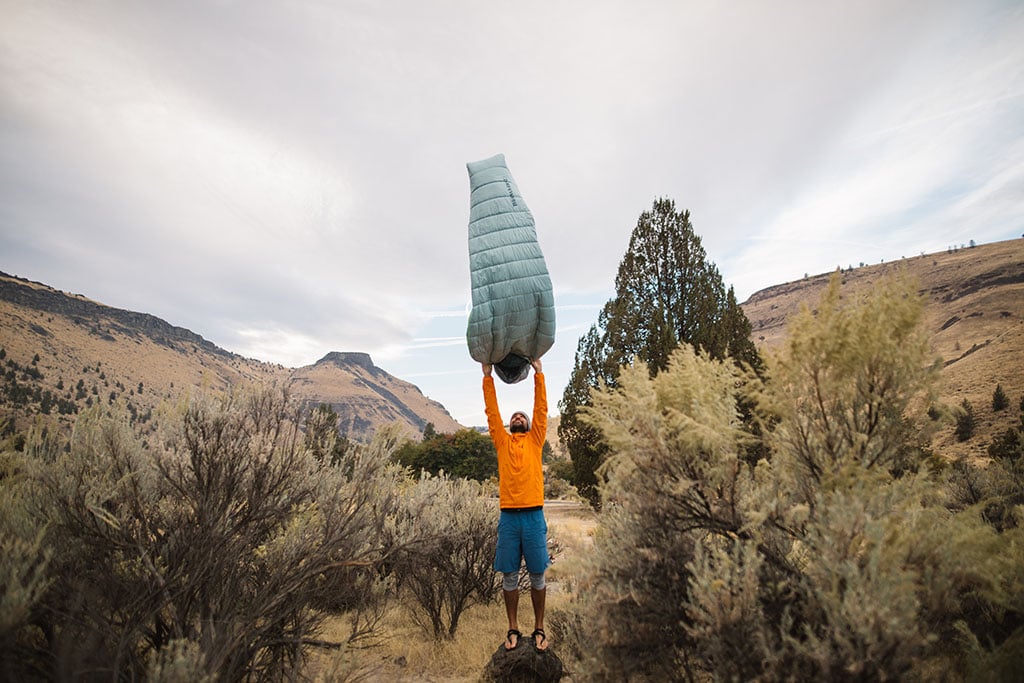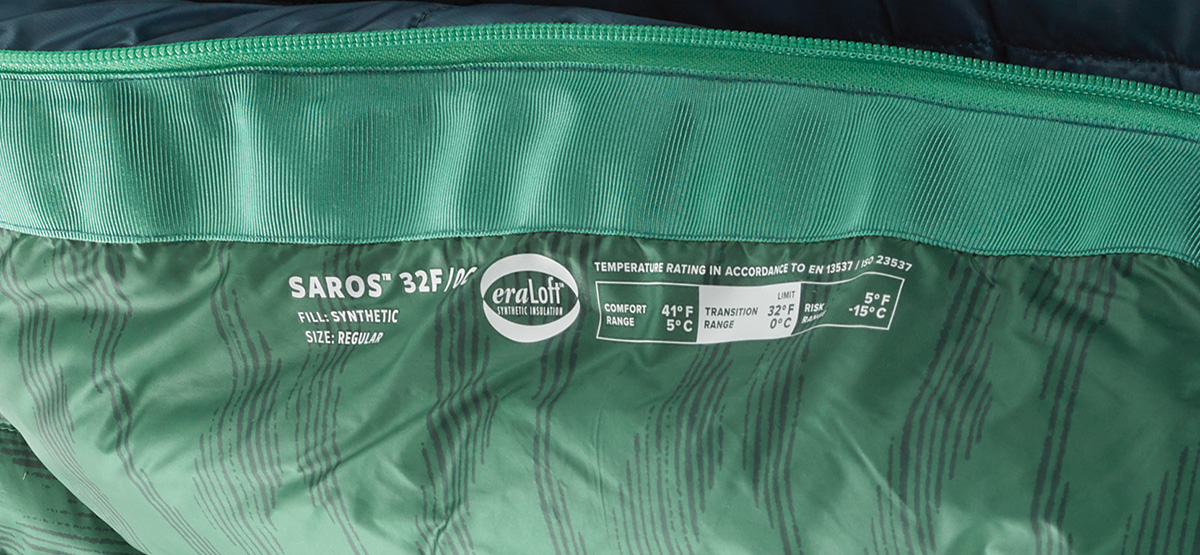After multiple seasons of adventuring, your sleeping bag or quilt may start looking a little worse for wear. Although you may love that coffee stain that sorta looks like a poorly-drawn bear or the musty smell of campfire and morning dew, cleaning your sleeping is extremely important. Dirt, grime and oils on the surface of your bag will slowly work into the fill of your bag, causing it to lose loft and warmth. Cleaning your bag is easy, but lightweight face fabrics and sensitive synthetic or down fill can get damaged if they are cleaned improperly. In order to keep your sleeping bag performing at it’s best, we’ve laid out how to wash a sleeping bag and quilt with these simple steps.

How to Wash a Sleeping Bag – The Basics
So let’s start with the “don’t do’s”. While washing your bag is important, over-washing your bag can damage the performance if you do it too often. A good rule of thumb is to wash your consistently-used bag once a year. You should also never dry clean, bleach or iron your sleeping bag or quilt.
Another important consideration is just how you are going to wash the bag. There are professional services out there that can clean your bag and quilt. While the results should be great, you could be subject to long wait times. Another option is to wash the bag in your tub, but this process can be tedious.
Our recommendation is to use a front loading commercial washer and dryer to prevent any damage to your gear. Never use a top-loading washing machine. The agitation can shred internal baffles and damage delicate face fabrics and stitching.
What You Need
In addition to a front-loading washing machine and a commercial dryer, there are a few other supplies you’ll want to gather before undertaking this process.
The first thing to pick up is a proper cleaning product based on the type of fill in your sleeping bag and quilt. There are several down and tech washes that are engineered to thoroughly wash your gear while maximizing the performance of the fill. Cleaners specifically engineered for sleeping bags and other technical gear rinse out thoroughly and leave no residues that can hamper down loft or performance of technical fabrics.
For drying your down bags and quilts, we also recommend getting a couple tennis or dryer balls. Tossing these in will keep the down in the bag from clumping together and aid in drying out the bag or quilt.
Down Sleeping Bags & Camping Quilts

1. Washing Down Sleeping Bags & Camping Quilts
Hand wash or machine wash in a large capacity, front loading washing machine, using 3 oz. of Nikwax Down Wash Direct. Select cold water and a gentle/delicate cycle with two rinses. We recommend an additional spin cycle as well to extract as much water as possible before drying. DO NOT dry clean. DO NOT bleach. DO NOT iron. Do NOT use a top-loading machine.
2. Drying Down Sleeping Bags & Camping Quilts
Hang dry your bag whenever possible. This can be a long process (24-48 hours or more), but this is by far the best way to get the longest life from your down. Use a well-ventilated, low-humidity environment. Hand-tease or shake out your bag gently to break-up down clumps, and flip it often to help speed the process.
If you need to dry your bag faster, tumble dry in a large dryer on low heat. As your bag gets drier, it will begin to loft and can actually fill the dryer chamber, preventing it from tumbling. This can cause hot spots and even melt the bag’s shell, so check it often for overheating and visually inspect frequently to make sure it’s tumbling. When you check it, feel for clumps of wet down and either shake the bag gently or hand-tease the clumps apart to redistribute down. Throwing in 3-5 tennis balls can help agitate the bag, breaking up those wet down clusters to speed dry times.
3. Nikwax® Hydrophobic Down Treatment and Re-Treatment
Use Nikwax® Down Proof™ to restore your down’s hydrophobic properties. Specially formulated to renew the Nikwax Hydrophobic Down treatment, it can also be used to provide improved water-resistance to any down bag. Follow directions on the bottle.
4. Storing Down Sleeping Bags & Camping Quilts
The less time your sleeping bag is compressed, the longer it will serve you by maintaining the loft necessary to keep you warm. Store your sleeping bag loose, in a cool, dry place. If you must store it in a bag, use the extended storage sack it came in, or something even larger. Never use a waterproof bag for long-term storage.
Synthetic Sleeping Bags & Camping Quilts

1. Washing Synthetic Sleeping Bags & Camping Quilts
Hand wash or machine wash in large-capacity, front loading washing machine. Use a mild, non-detergent soap. Select cold water and a gentle cycle with two rinses.
DO NOT dry clean. DO NOT bleach. DO NOT iron.
2. Drying Synthetic Sleeping Bags & Camping Quilts
Hang dry your bag whenever possible. This can be a long process (24-48 hours), but this is by far the best way to get the longest life from your bag. Use a well-ventilated, low-humidity environment. Unzip fully and flip it often to help speed the process.
If you need to dry your bag faster, tumble dry in a large dryer on low heat. As your bag gets drier, it will begin to loft and can actually fill the dryer chamber, preventing it from tumbling. This can cause hot spots and even melt the bag’s shell, so check it often for overheating and visually inspect frequently to make sure it’s tumbling.
3. Storing Synthetic Sleeping Bags & Camping Quilts
The less time your sleeping bag is compressed, the longer it will serve you by maintaining the loft necessary to keep you warm. Store your sleeping bag loose, in a cool, dry place. If you must store it in a bag, use the extended storage sack it came in, or something even larger. Never use a waterproof bag for long-term storage.

